- Saturday, July 05, 2025
- Stay Connected
 Abraham Lincoln
If given the truth, the people can be depended upon to meet any national crisis...
Abraham Lincoln
If given the truth, the people can be depended upon to meet any national crisis...
 Guildford news...
for Guildford people, brought to you by Guildford reporters - Guildford's own news service
Guildford news...
for Guildford people, brought to you by Guildford reporters - Guildford's own news service
Uphill All The Way – Wet Wet Wet – (Stratfield to Wallingford)
Published on: 26 May, 2014
Updated on: 29 May, 2014
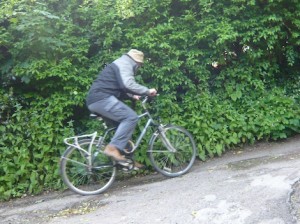 This is the second report on the author’s progress in his bid to cycle from Guildford to Edinburgh. It follows Uphill All The Way – The Idea and Uphill All The Way – The Plan (Part One) and Uphill All The Way – The Plan (Part Two)
This is the second report on the author’s progress in his bid to cycle from Guildford to Edinburgh. It follows Uphill All The Way – The Idea and Uphill All The Way – The Plan (Part One) and Uphill All The Way – The Plan (Part Two)
All Uphill All The Way articles can be found under the Leisure section heading on the front page, in their own sub-section called Uphill All The Way.
By Martin Giles
You are very lucky to get this report. I am lucky to still be alive. I am in the murder capital of the UK, ‘Causton’ where the murder rate is so high it is amazing there is anyone left.
The real name of ‘Causton’, the fictional town in TV’s Midsomer Murders, is Wallingford and despite its homicidal connections, Agatha Christie also lived here, it actually seems a pretty safe place.
It is also a place about which I have a theory. But first let me tell you about my travels.
I suppose it would have been too much to ask for for Sunday’s weather to continue and even before I had finished my leisurely breakfast at the excellent Wellington on the A33 at Stratfield Turgis, the rain had started. I had consulted the BBC weather map and decided to postpone my start to allow the worst of the rain to pass.
Initially it seemed my plan was working; there was no real rain to speak of and navigation of the maze like lanes was the main problem. But then, just after I passed Stratfield Mortimer station, the rain steadily increased. I was already too wet to worry about my cape so just carried on.
Once you are wet, you are wet and luckily it was not too cold. The main problem was trying to consult the map on my iPhone. First the screen kept getting covered in rain drops and then when I had cleared them there were drops on my reading glasses. And then, once clear of droplets, they became steamed up. The air was blue.
The average rainfall for the entire month of May in this area, is just under two inches. Just my luck for both of them to fall on me. As Wet Wet Wet sang, I can feel it in my fingers, I feel it in my toes…
I did still make quite a few wildlife sightings, no buzzards today, but several red legged or French partridges, one of which tried to end it all by flinging itself under my front wheel, escaping by only an inch or so.
Frequent, frustrating consultations to the map were necessary but I tacked a course in the generally correct direction and ended up, as planned, on a bridge over the M4 to the west of Reading.
There was a story recently about a cyclist causing a problem by following his sat nav on to a motorway. I saw for myself, a few weeks ago, an Asian gent pushing his bike along the hard shoulder of the M23, heading from Gatwick to London.
Personally, I found the urge to join the madding crowd on the motorway below effortless to resist.
Disillusioned by my poor navigation of the back lanes I decided to use some of the main roads. I passed through the rather characterless Tidmarsh which seems to pride itself on its lack of route signs. Has no one told them the war is over? Locals were unable to give directions to a town just a few miles away.
So more by luck than judgement I ended up in Pangbourne which seems to think that the Thames is a secret that should be kept well hidden. I stopped at the first reasonable pub I spotted and ordered some food, a ploughman’s lunch. The name of the dish seemed at first to perplex the Lithuanian barmaid.
She disappeared for a long time. I wondered if she was actually hunting a ploughman to serve up thinking: “These English, they’re crazy, they still eat their farm workers!” Mind you, you’d be lucky to spot a ploughman these days.
Refreshed, and relieved that the ploughman’s, in accordance with tradition, had contained no meat, I stuck to the undulating main road and continued to Wallingford which was now signposted.
To my right I could see views across the Thames, attractive even on such a dreary day.
All of a sudden I had arrived at my destination. There was the ever busy police station. I scanned nearby streets for white outlines of the latest murdered victims. But to no avail. Maybe John Nettles had succeeded in his quest to clean the town up? (After all, you don’t hear of much trouble in Jersey now.) The town appeared calm.
My lodge tonight is a room above a traditional pub. Quite comfortable. The landlady looked a bit uncertain at first with my immediate request for her to dry out my smalls in her tumble drier. Perhaps she thought I was trying to defeat the forensics? But I could tell I had won her over when I complimented her on her home cooked chilli con carne, which I selected from the dinner menu.
The items have already been returned warm and dry. (I have been informed that some readers are particularly interested on the subject.)
Now for my theory on Wallingford.
The town has many historic similarities with Guildford. As the name tells you, it was sited by a ford. It has Saxon origins, Alfred the Great granted it the right to mint coins. It has a Norman castle and three ancient churches (one now deconsecrated). Additionally, it is a market town with at least one former coaching inn. Oh, and it had a bike shop run by the Staniforth family (of Pedal Pushers fame).
But despite being one of the 18 most populous towns in England at the time of the Domesday survey, with 2,000 souls, today it has only grown to a population of 8,000.
“How can this possibly be,” I hear you ask.
I think it is all to do with the town’s (or the gentry who ran the show then) rejection of the railway. When the railways arrived not everyone was in favour of these new fangled things, belching smoke and cutting lines across their land. It seems that other towns close by were more accommodating, leaving Wallingford unconnected.
Subsequently, a spur line was built into the town but despite original intentions for it to continue on to link up with another mainline the momentum was lost, a financial crisis preventing the planned funding, and Wallingford remained with just a branch line terminus.
This obviously affected the commute time to London another critical factor for growth in south east towns within 50 miles of London. The line was closed in the 1960s (today it operates as a preserved line, the Cholsey and Wallingford Railway).
As a result the town has a largely unspoilt appearance. There are some jarring architectural examples but not too many. The two main parallel streets that run off the High Street remind me of Godalming High Street. They have a human scale and many independent businesses, plus a Waitrose.
Today though the same planning issues that affect Guildford are a subject of hot debate here. There has already been considerable growth causing extra pressures on local infra-strucure that is worrying established residents.
Tomorrow it looks as though it could be another wet trip. I am heading on to Aylesbury, famous for its ducks, which presumably are having a rare old time in this weather. I hear that Ukip has selected Aylesbury as one of its target seats for the next general election. I hope they let me in. I didn’t think to bring my passport.
By the way, if you hear no more then obviously it will be another case for DCI Tom Barnaby (John Nettles).
26.05.14 UATW computer data:
Miles cycled: 29.12 miles
Average speed: 9.9mph
Cycling time: 2 hours 53 minutes.



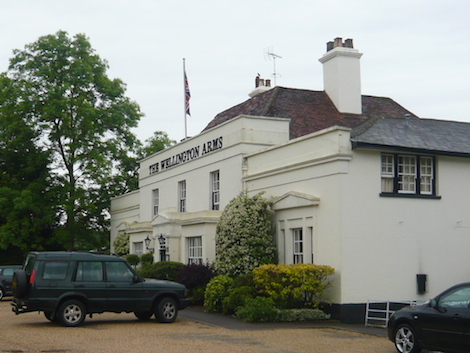
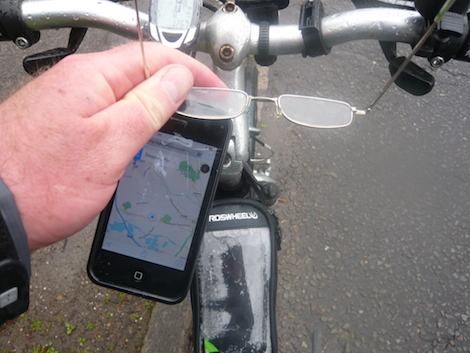
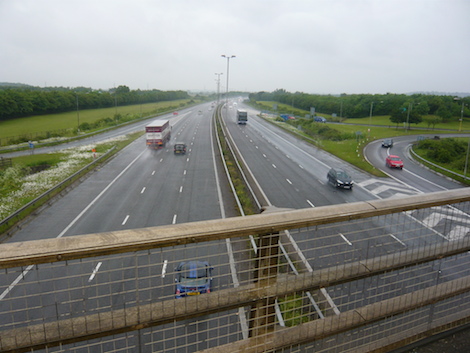

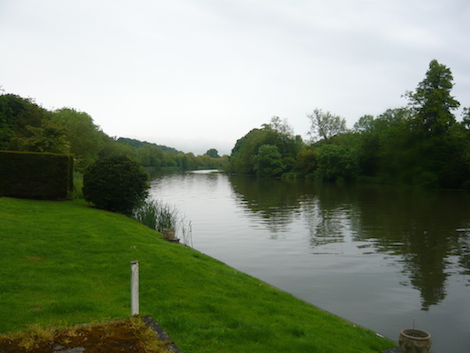










Mary Bedforth
May 27, 2014 at 6:37 pm
For your encouragement. This item was on the BBC 6pm News –
Does endurance cycling help you live longer? Take one look at cycling legend Brian Robinson (aged 83 it says in the comments), and you may have your answer.
Brian is a bone fide British cycling legend: the first Briton to finish the Tour de France in 1956 and the first to win a Tour stage in 1958.
He still lives in the village of Mirfield in West Yorkshire, where he was brought up, and still cycles twice a week.
“I do have a healthy lifestyle,” he says. “I can recommend cycling. They say it gives you an extra 10 years of life – another decade would do me fine!”
[..]
http://www.bbc.co.uk/news/health-27146342
PS Sorry I misspelt Staniforth previously. Only one ‘n’ but two brothers!
‘The name of Stanford is believed to be of ancient Saxon origin and to have been derived from the words stan, meaning “stone”, and ford, meaning “a river-crossing”. It was undoubtedly first given to a place answering that description (there were ten parishes of the name in England) and was taken therefrom by its first bearer because of his residence there at the time of the adoption of surnames in Great Britain. It is found in ancient records in the various spellings of Staniford, Staniforth, Stanforth, Stamforth, Standiford, Stanniford, Staynfor, Stanforde, Standford and Stanford, of which the form last mentioned is that most generally used in North America today.
Among the early records of the family in England are those of Adam de Stanford, of Oxford County in 1273’
Wikipedia
Shirley West
May 27, 2014 at 10:16 pm
Keep battling on Martin. It is a shame the weather is so bad for you – looking forward to your next report.Take care you biker.